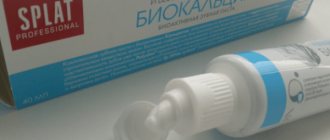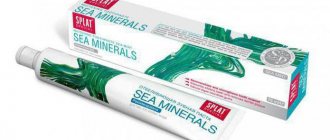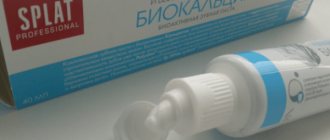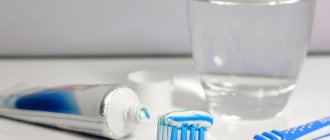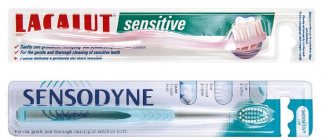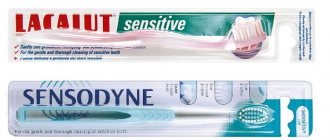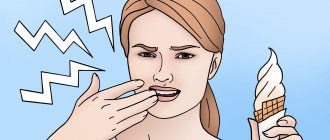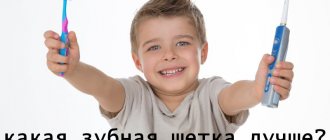Sometimes it can be difficult with children, especially when you need to instill in them certain hygiene skills. It is not easy to teach your child to brush their teeth every day. To make the process easier, try using a dental brushing calendar, which will turn the hygiene procedure into a game and help form a healthy oral care habit for the little ones.
Teeth brushing calendar
How many times a day should you brush your teeth?
When it comes to how many times a day you should brush your teeth, dentists are unanimous. Brushing your mouth twice a day is ideal for optimal dental health. For best results, teeth should be brushed before the first meal and after the last meal. Some people believe that cleaning after every meal is more important, and you can't blame them for being wrong.
In fact, brushing after every meal is recommended for people who are prone to tooth decay or whose mouth is in poor condition. In addition, people who wear braces are also required to brush their teeth after every meal due to the fact that the food they eat tends to get stuck between the braces and the teeth. Brushing your teeth twice a day is a habit that should be instilled from childhood. when a child begins to explore the world.
How long should you brush your teeth?
It is enough to brush baby teeth for 2 – 3 minutes. This is the norm for both adults and children. If your child can’t stand it for that long, try to turn brushing your teeth into a game, as described above, since simple coaxing is unlikely to help. In order for the child to have only pleasant impressions of the procedure, try doing it, say, to children's songs. Also try to explain how many times a day you should brush your teeth. Try to cultivate in your child the desire to take care of their teeth; in the future, this will undoubtedly have a beneficial effect not only on their beauty, but also on their health.
Children's professional teeth cleaning is
Hygienic teeth cleaning at the dentist involves a procedure whose purpose is to cleanse the teeth and gums of soft plaque or hard deposits.
Professional cleaning for children differs from the procedure for adults using methods that may be used by a dentist. A number of hardware methods have age restrictions. Our specialists individually select the safest and most gentle method of cleaning, taking care not only to fulfill the purpose of the procedure, but also to eliminate negative consequences.
When performing a comprehensive dental cleaning, the dentist completely cleans the tooth enamel, gums, subgingival pockets and hard-to-reach places, regardless of the presence or absence of pathological accumulations on them. By regularly performing hygiene in the dentist's office, the risk of developing dental diseases is minimized.
How to teach a child to brush their teeth
To begin, prepare your child for daily brushing by wiping his teeth and gums with a soft, damp cloth. Remember to wash your hands thoroughly. Use your finger to gently massage your baby's gums. As soon as your child reaches the age of two, buy him a toothbrush for children and start teaching him how to brush properly. In the beginning, the child will not be able to hold the brush properly, and therefore it is important to observe this process and correct it when necessary. You may need to continue helping your child brush his teeth until he is 6 or 7 years old.
It is at this age that children develop the ability to consciously do something. Even if your child insists that he can clean his mouth on his own, it is still best for you to supervise his actions. Many children do not like to do this, and may try to speed up the process by missing many important areas, either on the chewing surface or between the teeth.
Use only a soft toothbrush to avoid damaging your baby's delicate gums. Children who may swallow some of the toothpaste should buy fluoride-free toothpaste. Children get enough fluoride from their drinking water, and swallowing fluoride from toothpaste may actually do more harm than good. Also, fluoride, in excess amounts, can cause teeth to turn black. teeth brushing calendar will help you get used to brushing your teeth.
Why do you need a teeth cleaning calendar? This is a great way to remind your child to brush their teeth in the morning and evening.
Teeth brushing calendar for two children
Let your teeth always be healthy!
We will be happy to post your articles and materials with attribution. Send information by email
If the child does not want
You can overcome your toddler’s reluctance to pay attention to cleaning the mouth using the following simple methods:
- Play.
Pretend to be little yourself. Ask your child to teach you how to clean your mouth properly. Give him the brush and get ready for the lesson. Make the game fun and relaxed. If you want, praise the baby for “science.” The little reluctant one will like this fun game. Soon he will want his mother to brush his teeth, tickle his tongue and gums, and will want to rinse his mouth with clean water on his own.
- Let me taste the pasta.
Children's dental cosmetics without fluoride are safe even if the baby swallows just a little. Offer your little one several options for pastes with different flavors: raspberry, orange, lemon. Give me a lick. The baby's fear of unknown substances will disappear. The next step will be to clean the front incisors with the paste you like. Take your time, don't force the process to speed up.
- Gather the team in the bathroom.
Use series with bunnies and princesses on packages of pastes and brushes.
Say goodbye to them when you leave the bathroom after washing your face. Tell your baby that they really miss their owner and want to play with him.
- Count the teeth.
While brushing, count the teeth already treated with toothpaste. The brush and mom will act as math teachers. Warn your baby that the teeth are very offended if you forgot to count them; you need to devote some time to each of them. Simultaneously with teaching hygiene, the little ones will learn numbers.
- Don't forget about gifts and surprises.
You can also motivate those who don’t want to with promises of reward. But it must be earned. Buy stickers in the shape of stars and hearts and stick them on the poster all week if your baby complies with the request to go to the bathroom in the morning and evening.
After 7 days, count up the rewards and give out the well-deserved prize. Give your child the opportunity to choose a toy or sweets himself. Agree on this in advance, then the desire for independence will increase significantly.
Useful and proven tips for teaching your child to brush their teeth will not help if you are not patient and do not use your imagination. Remember that the best way for preschoolers to learn is through play.
Remember about teeth not only in the bathroom, but also during the day when your daughter puts the doll to bed. Report that Lala (toy) forgot to brush her teeth. Go to the bathroom with your baby and perform the ritual with the toy. And in the evening, remind her that the doll did not cry, but brushed her teeth and went to bed peacefully.
How many times a day should you brush your teeth?
Every adult knows: it is necessary to brush your teeth in the morning, before enjoying breakfast, and in the evening, before going to bed. Twice a day is quite enough - this is the opinion of most dentists.
In some cases, doctors recommend that patients use a toothbrush more often. This is required if:
- there is a tendency to carious lesions;
- gums often become inflamed;
- man wears braces.
In such situations, dentists advise brushing your teeth 3-4 times or after each meal. It is especially important to do this if you have a braces system: pieces of food tend to get under the structural elements, as a result of which the enamel deteriorates and caries develops.
The same rules apply to children. General recommendations: a child should brush their teeth twice a day, but if they have illnesses or have braces installed, then more often.
It is enough for adults to receive information about what measures to take to protect their teeth. For children, you will have to come up with games that transform the cleaning process from a tedious task into an exciting activity.
To ensure that visits to the dentist do not cause unpleasant emotions, but are a regular medical examination without the need to drill out cavities and remove hard plaque, develop a brushing schedule for your child and begin to follow it together.
Visiting the dentist
- at 9 months
- at 12 months
- Twice a year
Observation of teeth erupting. Examination of children for early diagnosis of abnormalities in the pathology of the dental system. Recommendations for brushing teeth. Selection of oral hygiene products. Removing dental plaque and plaque (if necessary).
Teeth cleaning
In the morning after breakfast and in the evening before bed. Teeth brushing time is 3 minutes.
Basic oral hygiene products:
- Manual toothbrush
- Toothpaste
The first children's toothbrush should be like this: with a small atraumatic rounded head; with very soft bristles; The tips of each bristle should be rounded and polished.
FIRST TEETH - parents brush!
Carefully clean the gums and wipe the teeth with damp gauze or special soft napkins (cloth fingertips), directing movements from the gums to the cutting edge of the tooth. Use children's toothbrushes, but without toothpaste for 2 YEARS - the child brushes his teeth under the supervision of his parents! Use children's toothbrushes with toothpaste for 3 YEARS - the child brushes his teeth independently, but under the supervision of his parents! Use children's toothbrushes with toothpaste
Nutrition:
Breastfeeding for up to a year. Avoid drinking sugar-containing drinks at night (juices, compotes, sweet kefir, etc.). Avoid eating sugar-containing foods (sweets, cookies, chips, etc.) between main meals. Consume foods that are healthy for your teeth, containing small amounts of sugar and sufficient amounts of vitamins and minerals. It is beneficial to eat solid foods, raw vegetables and fruits.
| Healthy foods for teeth Raw vegetables and fruits Nuts, dried fruits Milk, cheese, meat Fish, tea | Harmful foods for teeth Caramel, lollipops, chocolate Sweet carbonated drinks Sugar-containing chewing gum |
Teething:
First, the gums swell and look slightly inflamed, then the area where the tooth will appear turns white. This phenomenon occurs due to upward movement of the tooth. It shines through the thinning gum, causing its color to change. The final stage is the appearance of the tooth.
How to help with teething?
Use a teether made of non-allergenic polymers or silicone. Teethers can be liquid-filled or solid (the teether should be sterilized and cooled before each use).
Use gels for gums when teething, which have an analgesic effect.
Gels may contain anesthetics, antiseptic, and anti-inflammatory components. Anesthetic gels act superficially, but during teething they should not be used more than six times a day. Be sure to consult your dentist or pediatrician.
Early childhood caries
Early childhood caries is typical for children from one to three years of age. Most often, the cause of the development of this disease is infection of the child from parents with cariogenic microflora, consumption of sugar-containing drinks at night (juices, compotes, sweet kefir, etc.) and lack of oral hygiene.
The carious process first affects all 4 front teeth (upper incisors). Caries affects almost the entire surface of the erupted front teeth, the enamel of which at this age is still immature and fragile. Then the remaining primary teeth of the child begin to be affected by caries. The carious process progresses rapidly, leading to tooth decay and early removal.
How to prevent caries in primary teeth?
Be sure to sterilize bottles, pacifiers, baby toys and teethers! Do not take food samples from your child's spoon! Limit breastfeeding (after a year) and consumption of carbohydrates (sweets) at night! By the age of one year, a child should not suck a pacifier!
Average time for eruption of primary teeth.
| Central incisors | 6-8 months |
| Lateral incisors | 8-10 months |
| Fangs | 16-20 months |
| First molars | 12-16 months |
| Second molars | 20-30 months |
Timely and consistent teething indicates the normal development of the child’s body. Violation of the timing and sequence of eruption can occur with endocrine and metabolic disorders or general diseases of the child.
Remember that you should contact the dentist when the child is healthy and does not experience toothache!
How long should you brush your teeth?
The frequency of brushing your teeth usually does not raise questions or doubts. How many minutes does it take for it to be successful?
For the youngest, the first procedures should take a few seconds. The mother puts a special plastic finger guard with a tiny brush on one side on her finger and gently massages the baby's teeth.
Finger guard for babies
When should I start doing this procedure? If your baby is 7 months old and his first teeth have erupted, it’s time to start teaching him to brush.
Later, by about two years, you need to accustom your child to the fact that the duration of brushing will be 2-3 minutes.
During this time, you need to have time to clean the chewing surfaces, pay attention to the inside of the teeth and the interdental spaces. Teach your child to gently massage the gums - this is necessary to improve blood circulation in their tissues.
What methods are used
Martinka Dentistry offers comprehensive teeth cleaning at the best prices in Moscow. The clinic uses classical and modern methods for carrying out hygienic procedures. The selection of techniques and necessary manipulations is determined by a specialist individually, taking into account the patient’s age, condition of teeth and gums. If relative contraindications are identified, cleaning is postponed until they are completely eliminated.
In our dentistry, teeth cleaning is performed using the following methods:
- instrumental - the technique is used in exceptional cases when hard deposits or plaque accumulation in hard-to-reach places form on the child’s tooth enamel;
- ultrasonic - the procedure for cleaning teeth from plaque is carried out by exposing the tissue to ultrasonic waves (not recommended for children under 5 years of age);
- Air flow - teeth are cleaned using a special device that has two nozzles through which a stream of air with abrasive particles and a stream of water are supplied (allowed for children over 14 years old).
Cleaning of baby teeth is carried out mainly using special pastes and brushes, since there is a risk of damage to the thin enamel and the child’s still fragile teeth.
How to teach a child to brush their teeth
The best option for forming a sustainable habit in a child of brushing his teeth twice a day is play. How to make your task easier and speed up the process? Try the following methods:
- tell your child an interesting fairy tale in which a toothbrush appears, as well as “bad” and “good” microbes and bacteria;
- brush your teeth with him - let him watch your movements and repeat them; help the child in the process - after all, he does not yet know how to handle a brush;
- buy for your son or daughter “delicious” toothpaste and a brush that has stickers or three-dimensional images of his favorite “cartoon” characters;
- download a special calendar, print it and hang it in a visible place, and so that the baby can easily reach it - we’ll tell you why this is needed below.
Toothpastes that are interesting to children
The main thing is that the child must learn that brushing his teeth twice a day is a necessary part of the regime, just like washing his face after getting up and going for a walk after breakfast. Your task is to make your baby want to brush his teeth - this activity should be interesting for him.
Teeth brushing calendar for children
A child of 2 years old does not yet know how to read, but he likes to look at bright pictures and take part in their creation himself - draw, paint.
You need to print any in A4 format or, even better, in A3 format. Children like large, three-dimensional images.
The calendar was invented for those who are not yet familiar with letters. But it will also be interesting for older children, 6–7 years old, since, in addition to pictures, it contains inscriptions and short stories.
It consists of 30 (or 31, depending on the number of days in that month) images of the sun and moon. Every time a child wakes up in the morning and brushes his teeth, he colors one sun. In the evening, before going to bed, the child brushes his teeth and paints over the moon.
This way he will know for sure that not a single ritual has been missed today.
Set aside a place in the bathroom to place your son or daughter’s toothbrush and toothpaste. He should have his own corner in which a beautiful brush and “delicious” paste “live”.
Toothbrush with your favorite characters
To make it easier to consolidate skills, you can involve your favorite stuffed bunny or teddy bear - let them always brush their teeth and paint over pictures on the calendar with your child.
Use Colgate line pastes. This company has developed special children's pastes that:
- not oversaturated with fluorine;
- do not contain harmful substances and are therefore not dangerous if accidentally swallowed;
- have a pleasant taste.
Babies do not yet know how to rinse their mouths and often simply swallow the paste. If they eat some Strawberry or Fruit Flavored Colgate, nothing bad will happen.
Pediatric dentists also recommend ROCS pastes. They are designed taking into account the age characteristics of children: there are Rox pastes for the youngest, from zero to 3 years old, for children from 3 to 7 years old, and for teenagers.
These pastes protect enamel, contain xylitol, which serves to strengthen tooth crowns, as well as probiotics, which support normal oral microflora. Pastes do not cause allergic reactions and do not contain irritating components. Children like the taste of these pastes.
Recommendations from Dr. Zubastik
Teaching a child to brush their teeth twice a day is an important task that only parents can solve. Neither kindergarten nor school can help here. Therefore, watch your child: what is more important for him - to see your personal example? Participate in the process of brushing your teeth together? Show creativity - color pictures on the calendar? Use any method that is interesting and enjoyable for the child. Brushing his teeth should become a mandatory daily ritual for him, associated with pleasant emotions. And then caries or stomatitis will not be scary for your baby!
A short video: teaching kids to brush their teeth:

